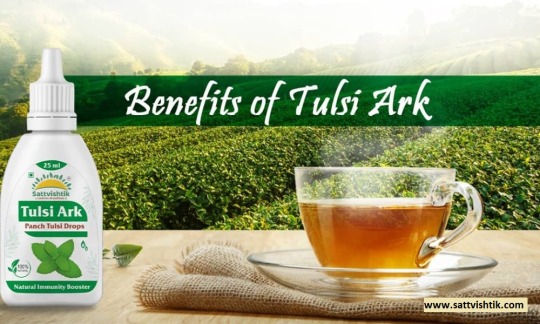#tulsi water benefits
Text
Healthiest Water Bottle
In connection with infused water, HALI Vaari is the healthiest water bottle that adds more to your H2O. It not only gives you the same refreshed feeling that flavored water does, but it adds nutritional benefits of tulsi water. Adding different combinations of herbs, fruits, and spices to your pure drinking water can lead to endless combinations that are not only delicious, but extremely good for you.

If you’re looking for healthiest water bottle then just shift to HALI Vari and Start Drinking Tulsi Water! You absolutely can. It's super affordable and that is why we offer best purified water price for you!
#infused water#herbal water#flavored water#flavored water bottle#flavored water brand#purified water price#bottled water pure#pure drinking water#drinking water bottle price#500ml bottle water price#best bottled water to drink#drinking water brand#world's best drinking water#tulsi water#benefits of drinking tulsi water in morning#benefits of drinking tulsi water#tulsi water benefits#healthiest water bottle
1 note
·
View note
Text
Ayurvedic Secrets to Radiant Skin: Understanding Your Dosha and Simple Homemade Skincare
In the pursuit of healthy, glowing skin, many of us seek solutions in expensive creams, serums, and treatments. But what if the key to vibrant skin lies in ancient wisdom that's been practiced for centuries?
Welcome to the world of Ayurveda, where the holistic approach to skincare goes beyond topical treatments to address the root causes of skin imbalances.


What is Ayurveda?
Ayurveda, often called the "science of life," is an ancient healing system that originated in India thousands of years ago. At its core is the belief that our well-being is intricately connected to the balance of three fundamental energies known as doshas: Vata, Pitta, and Kapha.
Understanding Your Dosha:
Each person is born with a unique combination of these doshas, which influence not only our physical characteristics but also our mental and emotional tendencies. By identifying your dominant dosha, you can tailor your skincare routine to address specific skin concerns effectively.
Vata Dosha: If you have Vata-dominant skin, you may notice tendencies toward dryness, flakiness, and sensitivity. Vata skin often feels parched and is prone to premature aging. To nurture Vata skin, focus on moisturizing and nourishing practices.
Skincare Routine: Massage your skin with warm sesame oil to deeply moisturize and improve circulation. Use gentle, hydrating cleansers and rich, emollient creams to lock in moisture.
Homemade Recipe: Create a hydrating face mask by mixing mashed avocado with honey and a few drops of almond oil. Leave it on for 15 minutes before rinsing with warm water.
Pitta Dosha: Pitta-dominant skin tends to be sensitive, prone to redness, inflammation, and occasional breakouts. Excessive heat and stress can exacerbate Pitta imbalances, leading to increased oiliness and irritation.
Skincare Routine: Opt for cooling and soothing ingredients like cucumber, aloe vera, and sandalwood. Use gentle, non-abrasive cleansers and avoid harsh exfoliants that can aggravate inflammation.
Homemade Recipe: Make a calming face pack by mixing sandalwood powder with rose water and a pinch of turmeric. Apply it to clean skin, leave it on for 15 minutes, then rinse with cool water.
Kapha Dosha: Kapha-dominant skin tends to be oily, prone to congestion, and enlarged pores. Kapha imbalances can result in dullness, blackheads, and a lack of vitality.
Skincare Routine: Focus on purifying and detoxifying practices to balance excess oil and congestion. Use gentle, oil-balancing cleansers and lightweight, non-comedogenic moisturizers.
Homemade Recipe: Create an invigorating scrub by mixing ground oats with yogurt and a pinch of turmeric. Gently massage it onto damp skin in circular motions, then rinse with lukewarm water.
General Ayurvedic Skincare Tips: In addition to dosha-specific practices, there are some general principles of Ayurvedic skincare that benefit all skin types:
Practice Abhyanga, or self-massage with warm oil, to promote relaxation and improve circulation.
Drink herbal teas like chamomile or tulsi to reduce internal inflammation and support overall well-being.
Maintain a balanced lifestyle with adequate sleep, regular exercise, and stress management to promote skin health from the inside out.
Ayurveda offers a holistic approach to skincare that emphasizes harmony between mind, body, and spirit. By understanding your dosha and incorporating simple, homemade remedies into your skincare routine, you can unlock the secrets to radiant and healthy skin naturally. Remember, consistency and mindfulness are key to achieving lasting results. So, embrace the wisdom of Ayurveda and let your inner glow shine through!
Feel free to reach out if you have any questions or need further guidance on your Ayurvedic skincare journey.
#astrology#ayurveda#skincare#spirituality#vedicastrology#hinduism#homemade#lotus#lakshmi#goddess#beauty
52 notes
·
View notes
Text
#very curious. share more in the tags or give me shit for my categories#inspired by a tea i Hated and was way too rich . woulda been fine milder but godd#polls
156 notes
·
View notes
Text
𝓢𝓮𝓵𝓯 𝓬𝓪𝓻𝓮 - 𝓣𝓱𝓮 𝓘𝓷𝓭𝓲𝓪𝓷 𝔀𝓪𝔂





This post contains Indian remedies to take care of yourself , i learned all of it from the woman around me and the internet .
𑁍multani mitti - also known as Fuller's earth is a form of clay which acts as a natural clenser, helps you to get rid of tan, acne, and blemishes, you can use it as a face pack along with turmeric , lemon juice , neem powder etc. Can be shopped through Amazon.
𑁍Neem- benefits such as controlled ache , clear skin , it boosts hair growth , it's an antiseptic, anti inflammatory, antioxidant, could be used in powdered form or you can buy a face pack, make a drink with leaves for detoxification
𑁍Aloe vera- benefits such as clear skin , moisturized skin , removes skin blemishes, removal of dark spots and stretch marks , could be used in the gel form . Also could be added to your fruit juices for blood purification .
𑁍Turmeric -Turmeric contains antioxidants and anti-inflammatory components. These characteristics may provide glow and luster to the skin. Turmeric may also revive your skin by bringing out its natural glow. You can use it as a face mask mixed with various ingredients, or you can add turmeric to milk and drink it , it will help in the detoxification.
𑁍Coconut: coconut water helps in hydration, is low in calories, zero fat , filled with electrolytes helps you to get moderate blood sugar and it tastes really good ! Coconut oil helps in fat burning, improves skin glow , you can apply it in your hair for faster growth and shine , coconut milk is a great alternative for dairy products as well.
𑁍Herbal tea : ingredients like ginger , cardamom, ginger, clove , Tulsi and of course tea , you can mix it with boiled water and drink it in the morning for your day to have a fresh start .
𑁍Wake up early in the morning, preferably at Brahmamuhurtha , which begins one hour and 36 minutes before sunrise, and ends 48 minutes before sunrise , depending on where you stay.
𑁍Instead of buying kajal , you can make natural Kohl at home using ghee and following the procedure.
𑁍Practice pranayama breathing, improves sleep quality, mindfulness, reduces blood pressure, helps in calming the mind , increases focus etc.
᪥𝑖𝑙𝑙 𝑚𝑎𝑘𝑒 𝑎 𝑝𝑎𝑟𝑡 𝑡𝑤𝑜 𝑖𝑓 𝑡ℎ𝑖𝑠 𝑔𝑒𝑡𝑠 𝑠𝑜𝑚𝑒 𝑙𝑜𝑣𝑒᪥
𝓣𝓱𝓪𝓷𝓴 𝔂𝓸𝓾 𝓯𝓸𝓻 𝓻𝓮𝓪𝓭𝓲𝓷𝓰 ❣︎
#self care#skin beauty#beauty tips#clear skin#life tips#skin benefits#life improvement#beauty#manifestation#vedic culture#desiblr#desi tag#desi tumblr#desi aesthetic#indian aesthetic#being desi#desi culture#just desi things#desi things
191 notes
·
View notes
Text
Garden "Keep or Ditch"
Going through the planted list to see what I want to keep, and what I want to get rid of for following seasons; basically, what I liked growing, and what I'll probably never grow again.

Virginia Mountain Mint (Pycnanthemum Virginianum)
Absolutely a keeper. I loved the flowers, the scent, the flavor. Even loved how low growing it was. Everything about its performance was fantastic, too. It tolerated the shade well, did great in both the heat and the rain, and didn't even need much watering when the rain dried up. Also didn't have any major pest or fungus issues.
Temperate Tulsi (Ocimum Tenuiflorum)
Another amazing keeper. Again: Flavor and scent were both great. Didn't have any major fungal or pest issues. Did great in the shade and with the heat and heavy rain, and didn't need too much watering. Only thing I didn't like is that it bolts early on. However, I love the flavor of it bolted better than I like the flavor of it unbolted. So I'll just have to keep an eye on it for seed formation moving forward.
Pineapple Sage (Salvia Elegans)
Still Iffy. It definitely performed way better in its own pot this year rather than with the other Sages ... But I'm still not sure if I actually like growing it. I don't use it much, and it doesn't really flower early enough on that the pollinators get any use out of it. I think this may be my last year with it.
Austrian Sage (Salvia Austriaca)
Ditching. Performed great despite the Grasshoppers loving it- especially in the hot weather. But it gets huge, it never flowered for me, and I just can't find a use for it. I doubt I'll grow it again.
Spanish Lavender (Lavandula Stoechas)
Iffy. It performs okay for about half the year, then stops flowering once it gets hot. Then all the lower leaves turn this weird grey; fungal treatments don't work, so I don't think it's a Fungal issue. That aside, though ... If I could just get it to perform better, I'd really love it. Because the scent is phenomenal and I love the flowers it produces way better than other more traditional Lavenders.
Minette Basil (Ocimum Basilicum 'Minette')
Absolutely ditching. It was a really cute and fun Basil, but harvesting and processing it was an absolute nightmare. Never again; I think this may officially be the only- and first- variety of Basil I've actually hated in my life.
Iceland Poppy (Papaver Nudicaule 'Champagne Bubbles')
Ditching. It was an absolutely beautiful Poppy to grow, but it was also super prone to Fungal rot and it eventually just got to be too much upkeep to keep it healthy. Combined with being toxic, I think I'll swap it out for Opium Poppy that can at least be used.
Pink Brandywine Tomato
Absolutely a keeper. Easily the best large indeterminate Heirloom Tomato I've ever grown and tasted. It was super fast growing and quick to set fruit. I did have issues with Blight with it, and I'm never growing it without a cage again, however (it gets far too large and unruly not to). But it's so worth growing; absolutely amazing, meaty flesh with minimal seeds. Perfect for baking and BLTs.
Silver Mound Artemisia (Artemisia Schmidtiana)
Iffy. Useful herbally, but I'm not sure I'll keep growing it here at least. It's an absolutely unruly little bastard that takes over and will grow under your raised bed. I'm going to have to dig it out, I think.
Valerian (Valeriana Officinalis)
Discard. Absolutely stunning, tiny little flower spikes that I'd really love to keep growing. Unfortunately it was too small and defoliated too quickly to really get any benefit out of it- either through harvesting for herbals, or even just general enjoyment (not to mention it bolted pretty quickly); didn't last the full season, but didn't die ... I just don't think it does well here.
True Za'atar (Origanum Syriacum)
Keeper. Took forever to get established and take off. But once it did, it really did; I think it was the constant rain we had all the way through mid summer this year. But it really thrived once the heat hit. I need to buy a second plant, however, and this one will likely have to come inside at the end of the season in order to keep it.
Hardy Marjoram / Italian Oregano (Origanum x Majoricum)
Keeper. Tolerated the heat amazingly. Didn't mind the rain. Grew huge and didn't mind harsh cut-backs. No pest issues ... All around, it performed way better than the Oregano variety that I grew last year, and I love the flavor. It's also much easier on my hands to process because it has larger leaves.
Tarragon (Artemisia Dracunculus)
Iffy. Absolutely loved its performance, hate how it grows. It's so ... spindly and weird in the worst and most obnoxious way. I'll probably give it a go for one more year to see if I really like it or not, but right now I have a weird love-hate relationship specifically with its funky growing habits.
Common Mugwort (Artemisia Vulgaris)
Absolutely love. Grew huge, incredibly fast. It was drought tolerant, and tolerated the early rain incredibly well. No serious pest or Fungal issues. Gorgeous smell, stunning flowers. All around just an absolute joy to have in the garden. Needs to be put in a sunnier spot next year, however, since it was very obviously reaching for the sun this year.
Absinthe Wormwood (Artemisia Absinthium)
Iffy. I could have done better with this one. I think it did ok in the partial shade, but I think the issue was the rain early in the season, and the lack of water later in the season. Also had some minor issues with Fungal infection. I want to try it at least one more time, but I think this one may benefit from being put in a pot container instead.
Fennel (Foeniculum Vulgare)
Keeper. I was pleasantly surprised by this one! Not only did the Swallowtails love it, but it was actually far more pleasant to cook with at the end of the season than I expected it to be as someone who hates Licorice / Anise flavors; it enjoyed the partial shade, and tolerated both the late rain and high heat well- in addition to having no Fungal or pest issues (and even tolerated multiple broods of Caterpillars just fine).
Fernleaf Dill (Anethum Graveolens)
Definitely Ditching. Grew well in that it did just fine in the partial shade, and tolerated the rain and heat just fine. However, like Cilantro (my bane), it bolts incredibly early. And once it bolts, even if you prevent it from flowering, it gets this very nasty, almost Turpentine flavor to it. It's also an absolute pain in the ass to process for drying. I definitely think I'd rather just buy it than grow it.
Monarda (Unknown Wild, Didyma, and Fistula)
Ditching. Just couldn't bring myself to care about them, and only the Wild one flowered. The other two were just ... There. I didn't enjoy them, so I don't think I'll grow them again. Especially since they're also apparently fairly invasive spreaders- which I was unaware of before planting them anyways. So I'll have to do a lot of work to get them out at the end of the season.
Lemongrass (Cymbopogon Unknown)
Keeper. Loved having this in the garden, even though I haven't actually used it yet. It's been so ... Fun. I think I'll dig it up, give it a haircut, and transplant it into a pot, however. Because I didn't expect it to get as tall as it did, and I think it'd just look better in a pot- though I'll need to actually fertilize it regularly if I do that, since they're apparently Nitrogen hogs.
Woodland / Flowering Tobacco (Nicotiana Sylvestris)
Absolutely keeping. I will never not grow this again. Not only is it absolutely stunning, but it outperformed every expectation I had as a Trap Crop when I selected it last year; I had zero issues with Aphids in my garden this year once it started going. It's just a shame it's not one of the usable kinds, otherwise!

A lot of stuff either didn't have much of a chance this year, or died too early in the season thanks to late heavy rains. So I didn't get to actually evaluate whether or not it's worth keeping around. I probably won't grow them next year regardless, just because I'm not planning on doing a full Herb garden again. But if, at some point, I do again, I'm highly likely to retrial them.
#Garden 2023#Gardening#Verderer#Domestic Witch#Domestic Witchcraft#Green Witch#Green Witchcraft#Cottage Witch#Cottage Witchcraft#Oklahoma#Personal#2023#Gardenblr#Plantblr#Quick References
3 notes
·
View notes
Text
Indian habits that are actually good for your health
Reading time- 4 mins
Since childhood, we have been following certain habits and rituals without ever questioning why we are doing it in the first place. People are working late at night, eating irregular meals, and consuming processed and junk foods in the name of modern living. In this rush of our modern life, we have entirely forgotten the small things our grandmothers taught us or made us do.
While each of these rituals has stood the test of time, it is only because they had a scientific reason behind it. India, a land of diverse cultures and traditions, is a treasure trove of habits and customs that not only enrich our lives but also promote mental, physical, and spiritual well-being.
Let's take a journey back in time to explore some of these timeless Indian habits that can rejuvenate our minds, bodies, and souls:
Morning Rituals: In India, our elders have always taught us to start the day by greeting the rising sun. The dawn is greeted with rituals that set a positive tone for the day. The practice of rinsing your face and eyes with cool water upon waking not only refreshes your senses but also stimulates blood circulation. The age-old tradition of performing Surya Namaskar (Sun Salutation) is a gentle yet invigorating yoga routine that flexes your muscles, calms your mind, and welcomes the day with renewed energy.
Healthy Eating: Having home-cooked Indian meals has been a habit inculcated in us since childhood. Indian households have long relied on the power of herbs and spices for their medicinal properties. Turmeric, with its anti-inflammatory benefits, finds its way into curries and healing concoctions. Holy basil, or tulsi, is revered for its stress-reducing and immune-boosting properties. Incorporating these natural remedies into your diet can fortify your health and enhance your vitality.

Eating with your hands: Indian meals are not just about satisfying hunger; they are an experience that engages all 5 senses. The practice of eating with your hands, as per tradition, connects you with your food, encourages slower eating, and aids digestion.
Practicing Gratitude: Indian traditions place great emphasis on gratitude. Daily prayers and offering thanks for the blessings in life cultivate a positive mindset and nurture your soul. Taking a few moments each day to acknowledge the abundance in your life can shift your focus from worries to appreciation, fostering a sense of mental calmness and emotional well-being.
Connection with Nature: India's reverence for nature is woven into its cultural fabric. Taking leisurely walks in green spaces, practicing yoga outdoors, or simply meditating under a tree can reconnect you with the natural world. This practice not only improves physical health through fresh air and movement but also rejuvenates the spirit.
Festivals and Celebrations: When we were young, Diwali meant a celebration with our entire friends & family including our most distant relatives. India's diverse festivals bring communities together in a celebration of life, traditions, and unity. Participating in these festivals fosters a sense of belonging and shared identity. The joy and camaraderie experienced during these events can have a positive impact on mental health, reducing feelings of isolation and promoting a sense of happiness.
Daily Prayers & Chanting Mantras: It is customary in a Hindu household to light a ghee diya and offer incense sticks while performing aarti every evening. Chanting mantras or sacred sounds can have a calming effect on the mind, reducing stress and promoting inner tranquility and the calming aroma of incense sticks removes negativity or blockages from your life.

Our traditions and rituals make us unique. They serve as the foundation of a strong value system that guides us on the path of righteousness and nurtures noble qualities. They help us find our true identity and create a feeling of belongingness. Our brand Prabhu Shriram was conceived for the bigger purpose of spreading happiness and peace of mind in today’s chaotic world.
Each fragrance has been curated after thorough scientific research to eliminate negative energies from your life & your house as a whole. Experience fragrances
2 notes
·
View notes
Text
Remembrance (Simran) of God's Name Opens a Portal to the Heavens - PODCAST & @ YouTube

"Santji used to often say, 'Leave a hundred things that you have to do and sit for satsang. And leave a thousand things that you have to do but sit for meditation.' He used to say this because that is the true work that we have to do. That is the true work for which we have been given this precious human life. Sant Ji used to say, 'Just like it is very important for us to eat food and drink water to live -- for this body -- it is equally important for us to provide satsang and meditation for the soul. Satsang is the water for the soul and food is the meditation.'' (Baba Ram Singh)
Spiritual Awakening Radio Podcast: Remembrance (Simran) of God's Name Opens a Portal to the Heavens - Listen @ YouTube:
https://youtu.be/YfYEv53PqOo
Spiritual Awakening Radio Podcast: Remembrance (Simran) of God's Name Opens a Portal to the Heavens - Listen, Download, Subscribe @ the Podcast Website:
https://spiritualawakeningradio.libsyn.com/remembrance-simran-of-gods-name-opens-a-portal-to-the-heavens
Direct Download URL:
https://traffic.libsyn.com/spiritualawakeningradio/Remembrance_Simran_of_Gods_Name_Opens_a_Portal_to_the_Heavens.mp3
@ Apple Podcasts:
https://podcasts.apple.com/us/podcast/spiritual-awakening-radio/id1477577384
@ Spotify:
https://open.spotify.com/show/5kqOaSDrj630h5ou65JSjE
@ Google Podcasts:
https://podcasts.google.com/feed/aHR0cHM6Ly9mZWVkcy5saWJzeW4uY29tLzIwNzIzNi9yc3M
& @ Wherever You Subscribe and Follow Podcasts (Apple, Spotify, Google, Amazon, Audible, Stitcher, PodBean, Overcast, i Heart Radio, Podcast Addict, Gaana, CastBox, etc...):
https://linktr.ee/SpiritualAwakeningRadio
Today's Sant Mat Satsang Podcast edition of Spiritual Awakening Radio includes readings from Santji and Baba Ram Singh on how satsang serves as an oasis for the soul. There is a mystic poem of Sant Tulsi Sahib on present-tense access to the heavens -- the way of Mystics -- where the Mystics and conventional religions part company. See my comments below on not placing earthly limits on the Limitless. There is the theme of simran, the invocation of names of God ("Simran is the first step of the spiritual ladder" -- Kirpal Singh), with readings from The Lord's Prayer, a John the Baptist quote from the Mandaean Gnostic Ginza Rabba (Great Treasure), Sant Dadu Dayal, Sant Tulsi Sahib, Kirpal Singh, Baba Somanath, Baba Ram Singh, and we conclude with a mystic poem of Namdev.
Not Placing Earthly Limits on the Limitless
"Theologians may quarrel, but the mystics of the world speak the same language." (Meister Eckhart)
"To seek God without knowing ‘El-Hdoud’ (Sacred Limits) means falling into the net of he who refused to bow down before the Wisdom of God's Appearance in the Adamic Limits, and hence, proposed to set his own limits of what God is. This is what otherwise is known as the most original form of evil that is deeply embedded in the Soul’s method of seeing Reality." (Druze Wisdom)
Commentary
I believe what this is saying is: do not have a limited approach to God and perceiving Reality. Do not limit God by bringing God down to our level of existence. God, by definition, is Limitless, Formless, Infinite, and Timeless. Therefore, to approach the Supreme Being, not with open-mindedness, awe, wonder, curiosity, and flexibility about experiencing Reality in whole new ways quite differently from the familiar earthly existence with the five senses, we just end up filtering these Divine Unknowns through our limited temporal bias and do not benefit.
Conventional religions have it backwards for the most part. Rather than building minuscule temples of wood and stone for the Supreme Being to squeeze into in an attempt to bring heaven to earth, it is we that need to go There. The soul must ascend and go to the Divine Level, to transcend temporal existence via another kind of consciousness.
As Meister Eckhart once said, "If the soul is to see God, then it must see no temporal thing, for as long as the soul is conscious of time or space, or of an idea, it cannot know God."
So yes, stillness: rising above body-consciousness, rising above thoughts and ideas, beliefs, theologies, earthly understandings, temporal bias, in other words, silent contemplative meditation.
"It is in the darkness that one finds the Light." (Eckhart)
"The eye through which I see God is the same eye through which God sees me; My eye and God’s eye are one eye, one seeing, one knowing, one love." (Eckhart)
In Divine Love, Light, and Sound, At the Feet of the Masters,
James Bean
Sant Mat Satsang Podcasts
Spiritual Awakening Radio
https://www.SpiritualAwakeningRadio.com
https://linktr.ee/SpiritualAwakeningRadio
#SantMatRadhasoami #SpiritualAwakeningRadio #SantMatSatsangPodcasts #JamesBean #Satsang #Podcasts #SpiritualPodcasts #Religion #ComparativeReligion #WorldScriptures #Spirituality #Meditation #Mysticism #Mystics #Gnosticism #Sant_Mat #Santmat #Radhasoami #Radhaswami #Radha_Soami #Radhasoamiji #ScienceofSpirituality #ScienceoftheSoul #SuratShabdYoga #InnerLightandSoundMeditation #Bhakti #PathoftheMasters #SpiritualQuotes #Scriptures #MysticPoetry #Mandaean #Gnostic #GinzaRba #GinzaRabba #LordsPrayer #Jesus #Yeshua #JohntheBaptist #Druze #MeisterEckhart #SantDaduDayal #SantTulsiSahib #KirpalSingh #BabaSomanath #BabaRamSingh #Santji #AjiabSingh #Namdev #Simran #Remembrance #PrayeroftheName #Zikhr #Zikr #Heavens
#spiritual awakening radio#satsang#simran#meditation#sant mat#radhasoami#podcasts#Names of God#Gnostic#Mystics
9 notes
·
View notes
Text
Benefits of Tulsi Ark

Tulsi is referred to as “The Incomparable one”, “Mother medicine of nature” and “Queen of herbs” within Ayurveda. It is truly an “elixir of life” for its medicinal and spiritual properties.
In India, most of our homes have a tulsi plant. It is considered a holy plant or sacred plant and is worshipped daily at home. People believe that the tulsi plant has the power to absorb negative energy and increase positivity at home. This helps us to attain mental peace. The leaves of the tulsi plant are used to cure the common cold, sore throat, headaches, heart ailments, and kidney stones. The leaves of tulsi are consumed for better health of skin, hair, and body organs. Tulsi leaves are loaded with vitamins A, C, and K. It also has minerals like calcium, magnesium, phosphorous, potassium, and iron.
Tulsi Ark:
As per ancient scriptures, it is advisable to swallow one tulsi leaf instead of chewing it every morning to gain maximum health benefits. One can also drink water or tea infused with tulsi leaves.
Another best way to have Tulsi herb is by consuming diluted Tulsi ark. Ark in Ayurveda means freshly distilled herbs. So generally, 5 kinds of Tulsi leaves are boiled. The steam is collected and cooled and then liquefied to make the ark. It is made available in small bottles for daily consumption.
A few drops of this potent Tulsi Ark can be consumed with water or tea, milk, or other beverages. The ark will make your drink 1000 times healthier. If you are down with a cold or cough, you can use it during steam inhalation.
Benefits of Tulsi Ark:
There are innumerable benefits of Tulsi Ark, few are listed below:
Respiratory diseases can be cured and prevented. It can be used to treat common cold to serious conditions like bronchitis and asthma. It enhances immunity. It can relieve congestion in the nose, throat, or chest.
It helps to Boost immunity. Vitamin C and zinc present in Tulsi make it a natural immunity booster.
The 5 types of tulsi used in the ark help to calm the mind and reduce high blood pressure
It has a strong antioxidant and it offers protection against skin, liver, oral and other types of cancer.
The anti-fungal properties of ark help to prevent fungal growth on the scalp. It keeps the scalp free from flakes and it also prevents hair loss.
Tulsi ark is excellent for the skin. Due to its antioxidants, it clears out blemishes and acne. It slows down the skin’s aging process.
Tulsi ark can soothe your anxious mind and keep your mind stress free.
Tulsi ark is known as the natural remedy to heal diabetics. The ark contains vitamins and minerals which help the body secrete insulin. This is like “Amrit” for type 2 diabetics patients.
Tulsi ark contains beta-caryophyllene. It helps in reducing swelling in any part of the body. It is also helpful for arthritically inflicted people.
It has anti-inflammatory properties to cure cuts and bruises.
The main stress-causing hormone is Cortisol. High-stress levels cause weight gain. Tulsi ark can calm nerves and reduce stress. Thereby gradually aiding in weight loss.
Any issues related to the stomach can be cured by Tulsi ark. It soothes the stomach and relieves stomach aches, flatulence, constipation, diarrhea, and acidity.
Tulsi Ark is a highly potent medicine to cure any disease or ailment. It keeps the body and minds fit and energetic throughout the day.
Sattvishtik Wellness Farm’s Tulsi Ark is made from 5 different variants of Tulsi. The variants are Ram Tulsi, Krishna Tulsi, Vana Tulsi, Amrit Tulsi, and Bisva Tulsi. Sattvishtik Wellness Farms believe in natural farming technique. We refrain from using synthetic fertilizers. The homegrown Tulsi herbs are nourished with naturally found fertilizer at the farm. The concentrated drops of Tulsi Ark from Sattvishtik wellness farms can be consumed daily by adding 2-3 drops in warm water. This routine will keep infections like colds, coughs, fever, sore throat, and flu at bay. It will help to detoxify your body and keep you in good health.
2 notes
·
View notes
Text
Top 10 Herbal Ingredients Backed By Science
Thinking about how to help your resistance against COVID-19? Well as you probably are aware, a solid insusceptible framework could be the ideal answer for tackle COVID-19! So the following inquiry that emerges is how would you help your invulnerability in a manner that does not hurt your body? Straightforward! Change to the inexplicable arrangements that top 10 herbal ingredients backed by Science given!
Caffeine:
It is one of the fundamental ingredient to busting these undesirable put away fats under the subcutaneous layer of our dermis. It does not actually consume the fats; it can assist your skin with broadening its veins to deliver the fats that are inside and to be utilize by the body. The issue with cellulite is that it is caught under the layers of our dermis and they get put away there for an extensive stretch of time, unused. This is the reason it is imperative to deliver them first.
Moringa:
Moringa is an herb work as a potent immunity booster. Its high antioxidant content also boosts the immune system and keeps you safe from infections.
So what makes this a particularly groundbreaking insusceptibility promoter? It contains rich amount of iron and vitamin A – nutrients that enhance the functioning of the immune system.That is not all, the ingredient likewise contains some other essential supplements that reinforce yourtissues, muscles and assist your body with recovery at times of infection. Drinking Moringa to its significant level of nutrients like potassium, iron, calcium and amino acids gives best result.
Neem:
Since days of yore, neem has been regarded and broadly utilized as an insusceptibility supporter. It is compelling in protecting the body from attacks by destructive microorganisms, on account of its enemy of viral, hostile to bacterial and against parasitic properties.
Neem can likewise keep your blood clean. It refines the blood by flushing endlessly poisons and this can back insusceptibility.
Tulsi:
Tulsi is another marvel spice that is greatly preferred by herbal ingredients backed by Science. This fragrant leaf can be your essential line of protection against COVID-19. Tulsi or basil is a ground-breaking disinfectant. Due to its phyto-chemicals and cell reinforcements, it can adequately find germs, infections and microorganisms that enter your body and demolish them.
Eatingtulsi leaves in the morning helps in maintaining a healthy digestive system. You can likewise add a couple of drops of water overflowed with tulsi leaves into your food.
Ashwagandha:
It is an adaptogen, which implies it can diminish feelings of anxiety. Stress brings down your insusceptible reaction and makes the body powerless against viral contaminations. Burn-through ashwagandha during this pandemic to diminish the risk of getting the Covid contamination.
Triphala:
This contains the anti-oxidative properties of three organic products bibhitaki, haritaki and amla. It is stacked with Vitamin A and Vitamin C, the two of which fortify your resistance. Start your day with triphala.
Ginger:
This has been a well-established solution for influenza and virus. It can likewise be compelling against COVID-19. It contains Gingerol, a cancer-preventing agent that can control up our safe framework and slaughter infections. Ginger is especially acceptable in preventing respiratory lot diseases. Add ginger to your dinners or you can likewise have it crude.
Garlic:
As like ginger, Garlic also will shield you from Covid by invigorating your resistance. It contains Allicin-the major biologically active component of garlic.It has found to reduce inflammation and offer antioxidant benefits.
Turmeric:
Each time your grandma said you need to drink turmeric for your wellbeing. Turmeric contains curcumin, a phyto-chemical that can eliminate poisons from your body and fortify your resistant framework to ward off germs and microbes. Add an additional scramble of turmeric to your dinners or drink it with milk.
Black cumin:
This concentrates can protect you from a scope of infections and microscopic organisms that attack your insusceptible framework. Both black cumin seeds and oil go about as cell reinforcements and help flush out free revolutionaries that debilitate your insusceptibility.
The things you need to improve your resistance are all inside your range. Consume these top 10 herbal ingredients backed by Science!
0 notes
Text
Gomutra Ark: A Natural Solution for Diabetes and Beyond
Gomutra ark, a traditional Ayurvedic remedy derived from cow urine, has been gaining popularity for its numerous health benefits, particularly in managing diabetes.
The Science Behind Gomutra Ark
Gomutra ark has been extensively studied for its antidiabetic and antioxidant properties. Research has shown that it significantly lowers blood glucose levels in diabetic rats, although its effect is less potent compared to the standard drug glibenclamide. The exact mechanism of action is not yet fully understood, but it is believed that sulfur present in cow urine might act like sulphonylureas, increase insulin receptor sensitivity, or enhance insulin release.
Visit Now: @ https://www.gomataseva.org/product/gomutra-ark/
Gomutra Ark for Diabetes Patients
Visit Now: @ https://www.gomataseva.org/product/gudmaradi-gomutra-ark-2/
For diabetes patients, Gomutra ark offers a natural and holistic approach to managing blood sugar levels. It can be used in combination with other herbal preparations to enhance its antidiabetic activity. Studies have demonstrated that regular consumption of Gomutra ark for 28 days can reduce mean blood glucose levels, making it a valuable adjunct therapy for diabetes management.
Formulations Available at Goseva
Goseva offers a range of Gomutra ark formulations, each with its unique blend of herbs and benefits. Here are some of the key formulations:
Visit Now: @ https://www.gomataseva.org/product/gaumutra-non-edible/
Punarnava Gomutra Ark: This formulation combines the antidiabetic properties of Gomutra ark with the rejuvenating properties of Punarnava, making it an excellent choice for managing diabetes and promoting overall health.
Visit Now: @ https://www.gomataseva.org/product/punaranava-gomutra-ark-2/
Kanchanar Gomutra Ark: This formulation incorporates the antidiabetic and antioxidant properties of Kanchanar, a plant known for its ability to reduce blood sugar levels and improve insulin sensitivity.
Visit Now: @ https://www.gomataseva.org/product/kanchanar-gomutra-ark-2/
Tulsi Gomutra Ark: This formulation combines the antimicrobial and antioxidant properties of Tulsi with the antidiabetic properties of Gomutra ark, making it an excellent choice for managing diabetes and promoting overall health.
Visit Now: @ https://www.gomataseva.org/product/tulsi-gomutra-ark/
Chobchini Gomutra Ark: This formulation incorporates the detoxifying properties of Chobchini, a plant known for its ability to purify the blood and promote overall health.
Visit Now: @ https://www.gomataseva.org/product/chobchini-gomutra-ark-2/
How to Use Gomutra Ark
Gomutra ark is typically consumed by mixing 10 ml of the formulation with a teacup of water, taken empty stomach in the morning and before sleeping. It is essential to follow the recommended dosage and consult with a healthcare professional before using Gomutra ark, especially if you have any underlying medical conditions.
Conclusion
Gomutra ark is a natural and holistic approach to managing diabetes and promoting overall health. With its antidiabetic and antioxidant properties, it offers a unique solution for those seeking a natural alternative to traditional medications. By incorporating Gomutra ark into your daily routine, you can experience the numerous health benefits it has to offer.
#100timeswashedghee#gircowghee#gircowgheeprice#a2ghee#a2cowghee#girgaughee#a2gircowghee#cowghee#bilonaghee#panchgavyaproducts
0 notes
Text
From Ancient Remedies to Modern Solutions: A History of Immune-Boosting Teas
Tea has been cherished for centuries, not only for its delightful flavors but also for its remarkable health benefits. Among the many varieties of tea, immune-boosting teas hold a special place in the realm of natural remedies. These teas, often infused with herbs, spices, and fruits, have evolved from ancient traditions to modern wellness practices. In this blog, we’ll explore the fascinating history of immune-boosting teas, highlighting the journey from ancient remedies to contemporary solutions, and we’ll delve into the modern innovations of fruit tea infusions and cold infused tea.

Ancient Origins of Immune-Boosting Teas
The history of immune-boosting teas dates back thousands of years. Ancient civilizations, including the Chinese, Egyptians, recognized the medicinal properties of various herbs and plants and incorporated them into their daily lives. These early herbal concoctions laid the foundation for the immune-boosting teas we know today.
Traditional Chinese Medicine
In China, tea has always been more than just a beverage. Traditional Chinese Medicine (TCM) extensively uses teas infused with medicinal herbs to promote health and prevent illness. Ginger tea, for instance, has been used for centuries to boost the immune system, improve digestion, and combat colds. Green tea, another staple in TCM, is renowned for its high antioxidant content, which helps to strengthen the body’s defenses against infections.
Ayurvedic Practices
Ancient Ayurvedic practices also highlight the importance of herbal teas for boosting immunity. Ayurvedic texts recommend teas made from turmeric, ginger, tulsi (holy basil), and other potent herbs to enhance overall health and vitality. Turmeric tea, with its anti-inflammatory and antioxidant properties, is particularly revered in Ayurveda for its ability to support the immune system.
Egyptian Herbal Wisdom
The ancient Egyptians, known for their advanced knowledge of medicine, utilized various herbal teas to promote health and ward off illnesses. Hibiscus tea, made from the vibrant hibiscus flower, was a popular choice for its rich vitamin C content and immune-boosting properties. This tradition of using hibiscus continues today, with hibiscus tea being a beloved immune-boosting beverage worldwide.
Evolution of Immune-Boosting Teas in Modern Times
As time progressed, the knowledge of immune-boosting teas spread across the globe, evolving with new ingredients and brewing techniques. Today, modern science has validated many of the health benefits that ancient civilizations attributed to these teas, and contemporary innovations have further expanded their appeal.
Incorporating Superfoods
Modern immune-boosting teas often incorporate superfoods such as matcha, spirulina, and acai berries. Matcha green tea, for example, is a concentrated form of green tea that provides a potent dose of antioxidants, vitamins, and minerals, making it a popular choice for enhancing immunity. Similarly, spirulina, a type of blue-green algae, is packed with nutrients and is often added to herbal tea blends for its immune-supporting properties.
Fruit Tea Infusions
One of the most exciting developments in the world of immune-boosting teas is the rise of fruit tea infusions. These teas blend traditional herbs and spices with a variety of fruits, creating a delightful and healthful beverage. Fruits like lemon, orange, berries, and pineapple add a burst of flavor and provide essential vitamins and antioxidants that support the immune system. Fruit tea infusions are not only delicious but also visually appealing, making them a popular choice among tea enthusiasts.
Cold Infused Tea
In addition to traditional hot brews, cold infused tea has gained popularity as a refreshing and convenient way to enjoy immune-boosting benefits. Cold infusion involves steeping tea bags or loose-leaf tea in cold water for several hours, resulting in a light, flavorful drink that retains the beneficial properties of the ingredients. Cold infused tea is particularly appealing during warmer months, offering a hydrating and immune-supporting alternative to sugary beverages.
Popular Immune-Boosting Tea Blends
Modern tea companies have embraced the rich history and health benefits of immune-boosting teas, creating blends that cater to contemporary tastes while maintaining traditional wellness practices. Here are a few popular blends you might find:
Turmeric Ginger Tea: Combining the anti-inflammatory power of turmeric with the soothing properties of ginger, this blend is a potent immune booster.
Elderberry Echinacea Tea: Elderberries are rich in antioxidants and vitamins, while echinacea is known for its immune-supporting effects. Together, they make a powerful blend for combating colds and flu.
Citrus Hibiscus Tea: This vibrant blend combines the immune-boosting properties of hibiscus with the vitamin C content of citrus fruits, creating a delicious and healthful beverage.
Green Tea with Lemon and Honey: Green tea provides a base of antioxidants, while lemon adds vitamin C and honey offers soothing properties, making this blend a classic choice for immune support.
Conclusion
The journey of immune-boosting teas from ancient remedies to modern solutions is a testament to their enduring appeal and efficacy. Ancient civilizations laid the groundwork for these healthful beverages, and modern innovations like fruit tea infusions and cold infused tea have brought them into contemporary wellness practices. Whether you’re sipping on a hot cup of turmeric ginger tea or enjoying a refreshing glass of cold-infused citrus hibiscus tea, you’re partaking in a rich tradition that has supported health and wellness for centuries. Embrace the history and benefits of immune-boosting teas and make them a part of your daily routine for a healthier, more vibrant life.
1 note
·
View note
Text
Embracing Natural Radiance: The Essence of Ayurvedic Face Wash
Ayurvedic face washes are a cornerstone of holistic skincare routines, revered for their gentle yet effective cleansing properties and their ability to nourish and rejuvenate the skin. Rooted in ancient wisdom and traditional healing practices, Ayurvedic face washes harness the power of nature's botanicals to purify, balance, and enhance the skin's natural radiance. From soothing sensitive skin to combating acne and blemishes, Ayurvedic natural face washes offer a holistic approach to skincare that honors the interconnectedness of mind, body, and spirit.
Infused with a blend of herbal extracts, essential oils, and natural ingredients, are formulated to cleanse the skin without stripping away its natural moisture or disrupting its delicate pH balance. Ingredients like neem, turmeric, and tulsi are prized for their antibacterial, anti-inflammatory, and antioxidant properties, helping to combat acne, reduce inflammation, and promote clearer, healthier-looking skin.
Moreover, Ayurvedic natural face washes are tailored to suit different skin types and concerns, offering customized solutions for oily, dry, sensitive, and combination skin. Whether you're dealing with excess oil and breakouts or dryness and irritation, there's an Ayurvedic face wash designed to address your specific needs and restore balance to your complexion.
Furthermore, Ayurvedic natural face washes go beyond mere cleansing to provide nourishment and hydration to the skin, leaving it feeling soft, supple, and revitalized. Ingredients like aloe vera, rose water, and sandalwood to soothe and hydrate the skin, while promoting cell renewal and reducing the appearance of fine lines and wrinkles.
Also their physical benefits, Ayurvedic face washes also offer therapeutic benefits for the mind and spirit, thanks to their calming and rejuvenating aromas. Essential oils like lavender, rose, and chamomile relax the mind, reduce stress, and promote a sense of well-being, making your skincare routine a holistic self-care ritual.
Moreover, Ayurvedic natural face washes are crafted with sustainability and environmental stewardship in mind, using natural, biodegradable ingredients that are ethically sourced and produced. By choosing face washes, you're not only taking care of your skin but also supporting eco-friendly and sustainable practices that preserve the planet for future generations.
Summarizing
Ayurvedic natural face washes embody the essence of natural beauty and holistic wellness, offering a gentle yet powerful approach to skincare that nurtures and nourishes the skin from within. With its blend of herbal extracts, essential oils, and natural ingredients, an Ayurvedic face wash cleanses, purifies, and rejuvenates the skin, leaving it looking and feeling refreshed, radiant, and revitalized. Embrace the wisdom of Ayurveda and the secret to radiant, glowing skin with Ayurvedic face washes.
0 notes
Text
Tulsi Powder Benefits
Tulsi, also known as holy basil, is a herb highly regarded in Ayurveda for its various health benefits. Tulsi powder, made from dried tulsi leaves, retains many of these benefits. Here are some key benefits of tulsi powder:
Immune System Support: Tulsi is rich in antioxidants and has antimicrobial properties, which can help strengthen the immune system and protect against infections.
Respiratory Health: It is often used to relieve respiratory issues such as coughs, colds, and asthma due to its expectorant and bronchodilator properties.
Stress Relief: Tulsi is considered an adaptogen, which means it helps the body adapt to stress. It can promote relaxation and reduce anxiety.
Digestive Aid: It aids digestion by stimulating the production of digestive enzymes and promoting healthy gut bacteria.
Anti-inflammatory Properties: Tulsi has anti-inflammatory properties that can help reduce inflammation in the body, making it beneficial for conditions like arthritis.
Cardiovascular Health: Some studies suggest that tulsi may help lower cholesterol levels and support heart health.
Skin Health: Applying tulsi powder topically or consuming it internally may help improve skin health due to its antibacterial and anti-inflammatory effects.
When buying tulsi powder, look for organic products to ensure purity and quality. It can be consumed by mixing it with water, milk, or added to smoothies, teas, or soups. Topically, it can be used in face masks, creams, or oils for skin benefits.
BUY : Tulsi Powder Benefits
0 notes
Text
Kanthi Tulsi Mala

The Tulsi Kanthi Mala represents a variation of the traditional Tulsi Mala, with its beads strung closely together to form a continuous loop. This design, known as a Kanthi Mala, is favored by devotees for its simplicity and ease of wear. Whether worn around the neck or wrapped around the wrist, the Tulsi Kanthi Mala serves as a constant reminder of the divine presence and a source of comfort and protection in times of need.
When considering the Original 5 Mukhi Rudraksha Price, it is important to recognize the sacred significance of these divine seeds. The 5 Mukhi Rudraksha, also known as Panch Mukhi Rudraksha, is revered for its association with Lord Shiva and its ability to enhance spiritual growth and well-being. Each bead represents one of the five elements - earth, water, fire, air, and ether - symbolizing the balance and harmony of the universe. As such, the price of an Original 5 Mukhi Rudraksha is a reflection of its spiritual potency and significance.
The combination of Tulsi and Rudraksha beads in the Kanthi Tulsi Mala creates a harmonious fusion of divine energies, amplifying the spiritual benefits of both materials. The fragrant aroma of Tulsi, combined with the sacred vibrations of Rudraksha, creates an atmosphere of purity and serenity, inviting practitioners to deepen their meditation and prayer practice. With each bead, they draw closer to the divine and awaken to the eternal truths of existence.
0 notes
Text
Spiritual Souvenirs: Must-Buy Items Along the Char Dham Yatra Route

Embarking on the sacred journey of Char Dham Yatra is not just a pilgrimage; it's an experience that resonates deeply with spirituality and devotion. Along the revered route of Char Dham Yatra, pilgrims encounter not only divine blessings but also opportunities to collect spiritual souvenirs that hold significant meaning. From Haridwar, the gateway to this divine expedition, to the revered shrines of Gangotri, Yamunotri, Kedarnath, and Badrinath, each stop offers unique treasures for spiritual seekers. Let's explore the must-buy items that enrich the soul along the Char Dham Yatra route.
Char Dham Tour Package from Haridwar: Unveiling Spiritual Souvenirs
Haridwar - Gateway to Spiritual Abundance

Char Dham Yatra commences from the holy city of Haridwar, where the Ganges descends from the Himalayas to the plains. Here, pilgrims can find a myriad of spiritual souvenirs to begin their journey. The must-buy items from Haridwar include:
Ganga Jal (Ganges Water): Revered as the holiest of waters, Ganga Jal is collected from the sacred Ganges river. Pilgrims procure this water as a symbol of purity and divinity, often using it for rituals and blessings.
Rudraksha Mala: Rudraksha beads are believed to possess divine properties and are commonly used in meditation and prayer. Pilgrims can purchase Rudraksha malas from Haridwar to enhance their spiritual practices throughout the journey.
Tulsi Mala: Tulsi (holy basil) holds immense significance in Hinduism and is associated with Lord Vishnu. Tulsi malas are revered for their spiritual energy and are sought after by pilgrims for protection and blessings.
Enriching Stops Along the Char Dham Yatra
Gangotri and Yamunotri - Source of Sacred Rivers

As pilgrims proceed towards Gangotri and Yamunotri, the sources of the Ganges and Yamuna rivers respectively, they encounter picturesque landscapes and divine serenity. Along these stops, they can find spiritual souvenirs such as:
Prasad (Sacred Offerings): Offerings made at the temples of Gangotri and Yamunotri hold immense significance. Pilgrims often purchase prasad, including sacred sweets and dried fruits, as blessings to carry forward on their journey.
Holy Scriptures: The scriptures, including the Bhagavad Gita and the Ramayana, are available in various forms along the route. Pilgrims acquire these scriptures to deepen their understanding of Hindu philosophy and seek spiritual guidance.
Copper Utensils: Copper utensils are commonly sold in markets near the temples. It is believed that drinking water from copper vessels has numerous health benefits and spiritual significance.
Divine Treasures at Kedarnath and Badrinath

Kedarnath - Abode of Lord Shiva
At Kedarnath, the abode of Lord Shiva, and Badrinath, the seat of Lord Vishnu, pilgrims find themselves immersed in divine vibrations. The must-buy items from these sacred sites include:
Shiva Lingam: Pilgrims procure miniature Shiva Lingams as divine reminders of Lord Shiva's presence and blessings. These sacred symbols are worshipped with reverence throughout the journey.
Badri-Kedar Prasad: A unique blend of offerings from both Kedarnath and Badrinath, this prasad is considered highly auspicious. Pilgrims often acquire it as a token of divine blessings.
Panchamrit: A mixture of five sacred ingredients, including milk, curd, honey, ghee, and sugar, Panchamrit is considered a divine elixir. Pilgrims purchase Panchamrit as a symbol of purification and spiritual nourishment.
Conclusion
As pilgrims undertake the transformative journey of Char Dham Yatra from Haridwar, they encounter not only divine blessings but also opportunities to collect spiritual souvenirs that enrich their souls. From the sacred waters of the Ganges to the divine symbols of Lord Shiva and Lord Vishnu, each item holds profound significance in the spiritual journey. By acquiring these treasures along the Char Dham route, pilgrims carry with them not just material possessions but eternal blessings and memories of divine grace.
Char Dham Tour Package from Haridwar offers pilgrims the chance to embark on this sacred journey and collect spiritual souvenirs that resonate with their souls.
0 notes
Photo

Tulsi water: 8 well being advantages of consuming it each day https://justloseweight.tn/tulsi-water-8-health-benefits-of-drinking-it-every-day/?utm_source=tumblr&utm_medium=social&utm_campaign=ReviveOldPost
0 notes